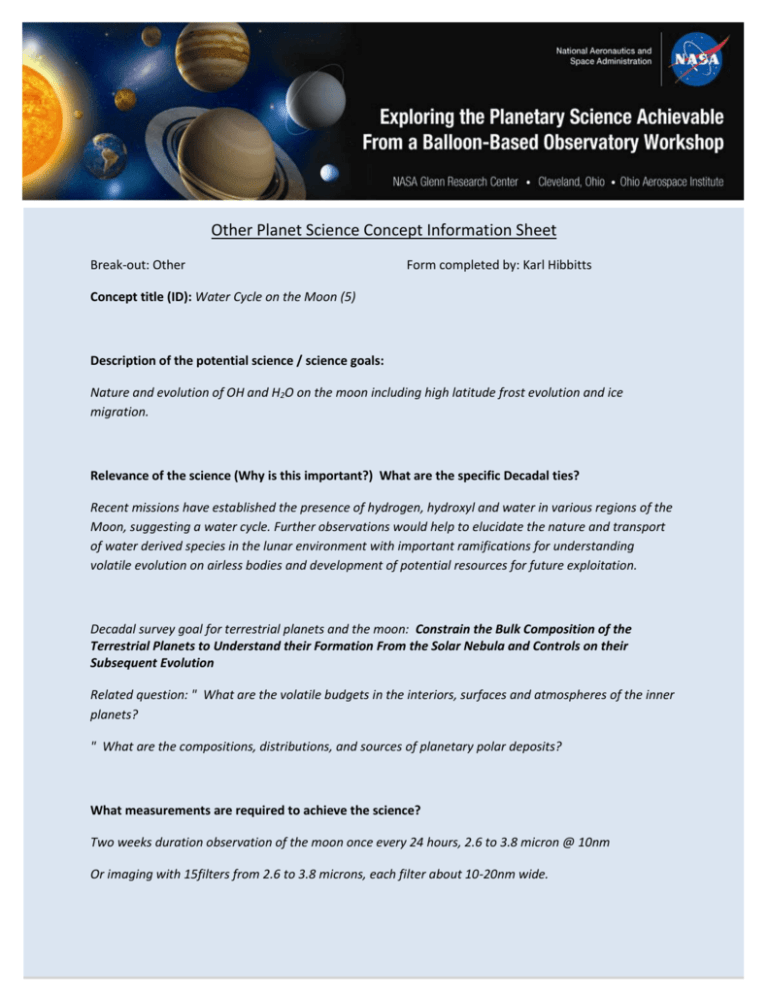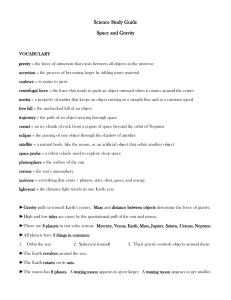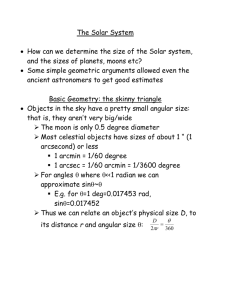Water Cycle on the Moon - Lunar and Planetary Institute
advertisement

Other Planet Science Concept Information Sheet Break-out: Other Form completed by: Karl Hibbitts Concept title (ID): Water Cycle on the Moon (5) Description of the potential science / science goals: Nature and evolution of OH and H2O on the moon including high latitude frost evolution and ice migration. Relevance of the science (Why is this important?) What are the specific Decadal ties? Recent missions have established the presence of hydrogen, hydroxyl and water in various regions of the Moon, suggesting a water cycle. Further observations would help to elucidate the nature and transport of water derived species in the lunar environment with important ramifications for understanding volatile evolution on airless bodies and development of potential resources for future exploitation. Decadal survey goal for terrestrial planets and the moon: Constrain the Bulk Composition of the Terrestrial Planets to Understand their Formation From the Solar Nebula and Controls on their Subsequent Evolution Related question: " What are the volatile budgets in the interiors, surfaces and atmospheres of the inner planets? " What are the compositions, distributions, and sources of planetary polar deposits? What measurements are required to achieve the science? Two weeks duration observation of the moon once every 24 hours, 2.6 to 3.8 micron @ 10nm Or imaging with 15filters from 2.6 to 3.8 microns, each filter about 10-20nm wide. Water and OH need 2.6 – 3.2 microns, temperature obtained with longer wavelengths Following mission: observe during passage through earth magnetotail when solar wind bombardment is shut off. What are the driving requirements to achieve the measurements? (E.g. time on target, frequency of observations, aperture, focal length, wavelengths, pointing precision and stability, specific observing location(s), critical observation time(s), are repeat flights required? or whatever else that may drive the hardware or mission design/architecture). Telescope aperture: .5m Telescope focal length: tbd Wavelengths: 3 micron range Pointing precision: 1” Required time on target: several hours per day, every day two weeks. Are there other ways to achieve this science, and if so, why would a balloon platform be preferable? Continuous observation allows characterization of volatile deposits and elucidation of transport paths. What are the potential observation targets? Moon What planetary science disciplines would this involve? Origins, Magneto-ionosphere physics, PGG, hydrology Point of contact for follow-on questions (Name and contact info) Karl Hibbitts, APL











